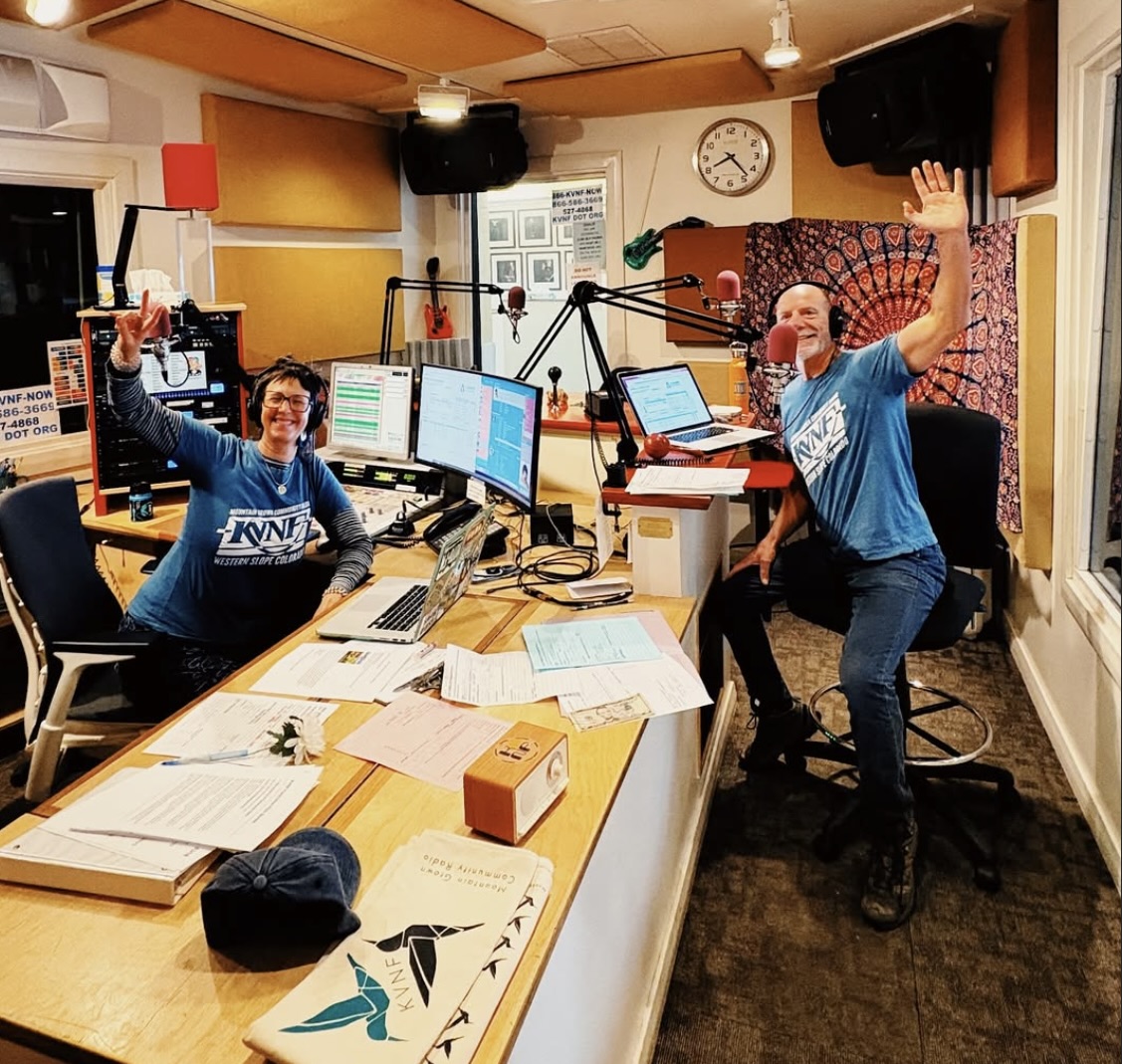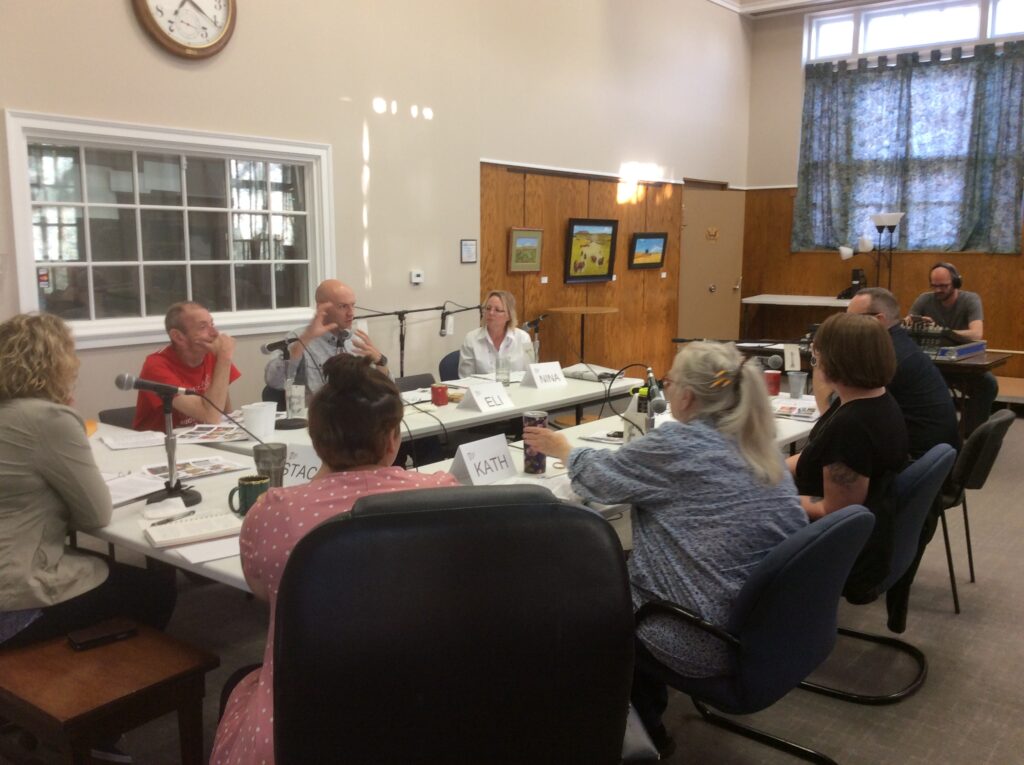
The High Plains Radio Readers Book Club, an all-volunteer effort, gathers for a book discussion broadcast at the High Plains Public Radio studio in Garden City, Kan. Photo courtesy of HPPR.
By Mark Glaser
Public media has been a stalwart provider of local news in communities around the country for decades. Now the system is being severely challenged after the loss of $1.1 billion in federal funding and the closure of the Corporation for Public Broadcasting. And that’s particularly dire in rural and Native communities, where the share of federal funding is much higher than in urban areas.
But systemic challenges call for systemic solutions. Public Media Company is managing the new Public Media Bridge Fund, with major funders committing more than $36.5 million so far. Press Forward and Media Impact Funders and partners are working to coordinate a broader philanthropic response.
And two initiatives supporting public media in rural areas, High Plains Public Radio (HPPR) and Rocky Mountain Community Radio (RMCR), have received $750,000 and $1 million, respectively, over three years from Press Forward’s Open Call for Infrastructure.
These infrastructure programs have the chance not just to help with funding but to rethink the way that public media operates in rural areas.
High Plains will launch an ambitious Civic Media Network, which will recruit community contributors in rural areas to cover Kansas, Texas, Oklahoma, Nebraska and Colorado. Rocky Mountain will create a shared engineering staff for its 21 community radio stations across Colorado, New Mexico, Utah and Wyoming, creating an equipment pool for emergencies and developing an apprentice program to strengthen the talent pipeline.
“Rather than a ‘struggle to survive’ I see this work as a time to ‘realize the potential’ of HPPR,” wrote Quentin Hope, executive director of HPPR, on his network’s loss of federal funding.
These programs give the networks the chance to truly realize the potential of their work, helping support rural public media and community radio stations in a difficult time. We spoke with the leaders of the initiatives to learn more about them.
Quentin Hope, executive director, High Plains Public Radio

Quentin Hope, High Plains Public Radio
With the loss of federal funding, how will this new Civic Media Network help with infrastructure for smaller stations?
As are other stations, we are going through a process we call “assess, adjust and realign.” It’s looking closely at the costs of each of our 18 stations, local programming and national programming and what can be tightened — but there’s not a lot of room to maneuver. We’ve always run very lean. So this work is also about being clear eyed with supporters about what services could be lost if CPB is not replaced.
From there, it’s a matter of both “bridging” and “building.” The bridging is our “Up to Us” campaign to raise $550,000 in local support to cover the loss of two years of CPB grant funding and services support. This will give us the means to continue current services and the runway to “build” reimagined and greatly expanded regional news and information services – the High Plains Civic Media Network.
Creating this network will fundamentally transform the organization into a new generation of civic media serving the High Plains. Compared to traditional public radio, we will work to build a wider audience by focusing first on audience needs, interests and perspectives and reaching them where they are. In turn, this will build a broader base of financial support in the years beyond the “bridging” period. So the bridging funding isn’t about going from point A to point A; it’s about going from Point A to Z.
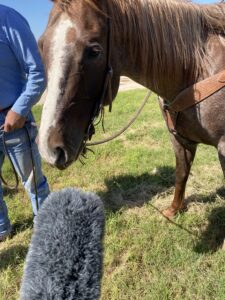
A horse gets into the interview by reporter Calen Moore of HPPR while talking with a rancher. Photo courtesy of Calen Moore.
What’s your goal as far as number of contributors and how do you think you’ll recruit them to join?
We serve 89 counties and 332 communities across the High Plains region of five states — very rural, very small town, very farming and ranching, and traditionally conservative. Through the Civic Media Network we want to be a presence in the lives of these communities by providing much more of an ongoing flow of news and information of interest. Not just feature or investigative stories, but everyday utilitarian items, much of it in short form. And from a regional perspective — what’s happening and developing in one community that may be of interest to another a couple of hundred miles down the road.
To do this we are aiming to build a network of 40 to 50 contributors with various roles — community contributors, topical contributors and regional curators — supported by a core editorial coordination and publishing team. We also hope to have scores of “community connectors,” volunteers to serve as our local contacts, alerting us to what’s happening, putting us in touch with people doing interesting things, and encouraging local organizations to list events on our regional calendar. We want the network to have a face, someone you know, in as many communities as possible.
To build this network, we will need to find people who are well-tied to their community and have the time and interest to cover stories — people who are themselves mission-driven. It will be a challenge since these aren’t qualities that easily fit into a job listing. But we have a start with the networks of people we’ve already developed across 45 years of operations.
How do you see the content topics and formats, and how will it be distributed?
Having worked in this region a long time, we know there’s a need for practical information such as weather conditions, alerts and warnings, healthcare access, family care, social services, educational opportunities, workforce availability, community assimilation and other topics that can be especially difficult in rural areas. And there’s interest in the nature of the region itself, given its common geography, environment, economy and settlement and cultural history.
This will be primarily digital content, but we will also think about where broadcast audio and on-demand audio fit in as well. We’ll distribute it through our existing website, newsletters and broadcast channels, along with Facebook and Instagram. Over time, we’ll look to expand to SMS and next-generation FM emergency warning systems and consider and test other platforms such as Reddit and YouTube — with an eye on the audience return for the effort required. For further distribution, we will expand on relationships we have for content-sharing, including with public media, independent digital news sites, and some daily and weekly newspapers.
Breeze Richardson, president, Rocky Mountain Community Radio
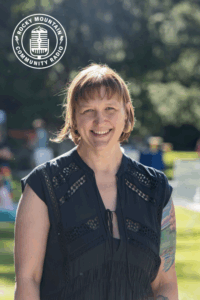
Breeze Richardson, president, Rocky Mountain Community Radio
With the loss of federal funding, how will the Press Forward grant help you build infrastructure to keep smaller stations strong?
Federal funding reductions are expected to significantly affect stations within the Rocky Mountain Community Radio coalition of 21 stations, particularly those serving rural communities. These stations each anticipate annual losses in the hundreds of thousands of dollars, which will require substantial adjustments to operating budgets. In response, stations are intensifying efforts to secure alternative funding through individual contributions, competitive grants and other strategic initiatives to mitigate the impact.
The Press Forward grant provides critical support at a pivotal moment. By offsetting infrastructure-related expenses across member stations, the grant enables reallocation of limited resources toward essential operations. While the financial relief may be modest in scale, it represents a meaningful contribution to sustaining local journalism and strengthening the resilience of smaller stations in the face of federal funding shortfalls.
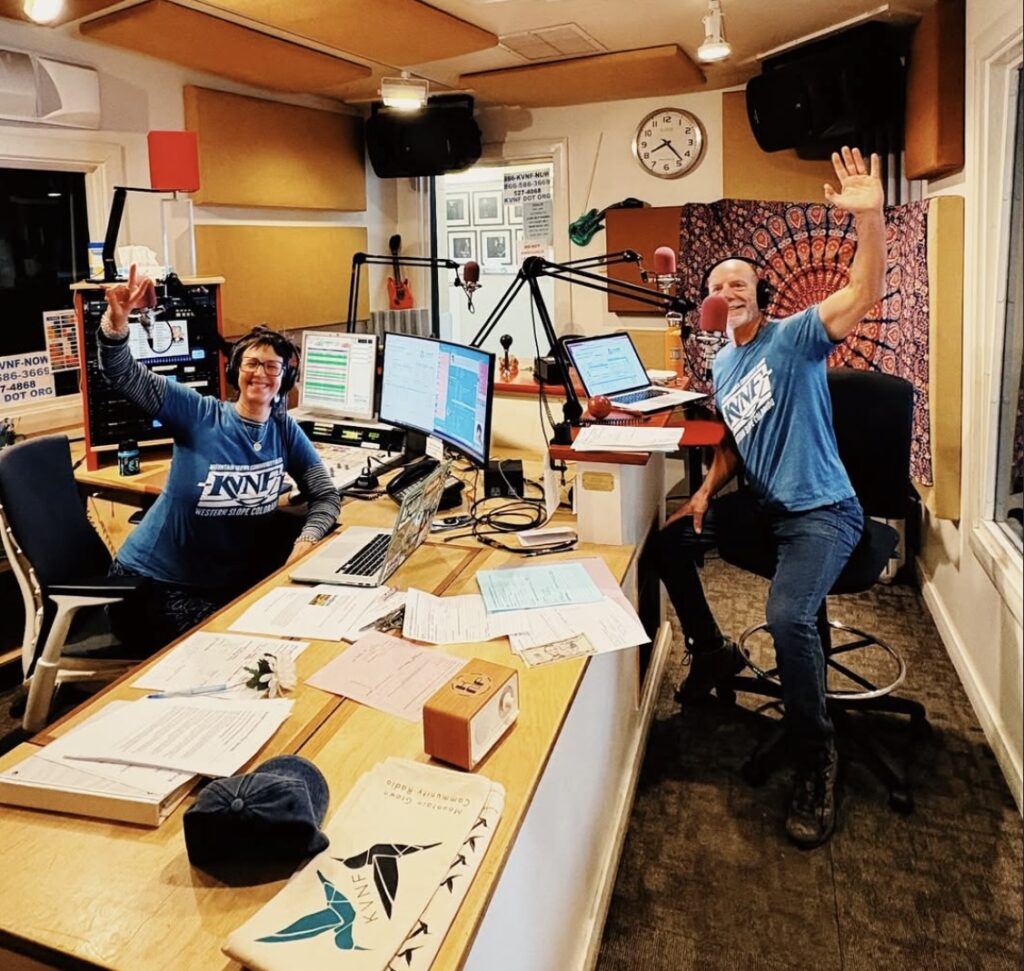
DJs at KVNF, part of the Rocky Mountain Community Radio. Image courtesy of RMCR.
Most Rocky Mountain Community Radio stations operate with very limited paid staff and lack the resources to employ a full-time engineer. Instead, they rely on contract engineers who often have competing demands and limited availability. A shared engineering resource will address this persistent challenge. The coalition’s ability to hire a full-time engineer will be a transformative step, ensuring that small stations receive timely support for urgent issues and consistent attention to deferred maintenance from a reliable professional.
Radio stations across the region are facing a critical shortage of engineering talent, driven by retirements and a lack of incoming professionals. Our apprentice program is designed to recruit and train the next generation of engineers to serve the Rocky Mountain region. We aim to preserve the institutional knowledge of retiring engineers. To build a strong pipeline, we’ll explore partnerships with community colleges and tap into the skills of former military personnel whose technical expertise can be readily adapted to broadcast engineering.
What are some challenges you expect to have with this initiative?
As a pilot program, this initiative will evolve over its three-year span. We anticipate encountering unforeseen challenges and are committed to remaining flexible and creative in our approach. One major hurdle is the geographic scale of our network—spanning four states—which presents logistical complexities for a shared engineer.
One of the program administrator’s first tasks will be to assess engineering needs across the region, prioritize support and develop strategies to maximize efficiency while navigating the realities of our expansive footprint.
*****
Geographically, these projects cover a lot of ground, and they focus directly on rural plains and mountain states that need support to get residents the local news and information they need. And with federal cuts to funding, these public media stations need support to become part of strong networks for the long run.
Mark Glaser is a communications consultant for Press Forward, Knight Foundation and Tiny News Collective and was the founder and executive editor of MediaShift.org. He was formerly the director of business and program development for the New Mexico Local News Fund. He runs the Wind Power Media consultancy out of Santa Fe.

